Welcome to the 2023 Annual Safety Review (ASR), which looks at the safety performance of the European aviation system in 2022. Access the full ASR on the EASA Website here.
Introduction to the EASA Annual Safety Review
This, and other analyses carried out by EASA in collaboration with the National Aviation Authorities (NAAs) and industry is used to support the decision making that is reflected in the European Plan for Aviation Safety (EPAS). Therefore, where risks are identified, further analysis is performed and when needed, mitigation actions are included in the EPAS. This is a continual workstream as part of the European Safety Risk Management Process.
The report provides an analysis of accidents, serious incidents and other occurrences, using ICAO Annex 13 definitions. The source is EASA’s occurrence database complemented by the European Central Repository (ECR), which contains the reports collected under Regulation (EU) 376/2014. The ASR also provides information on the level of occurrence reporting in Europe and also on EASA’s standardisation activities.
Before starting with the analysis, it is useful to mention some developments and achievements support reporting, analysis and mitigation of safety risks in Europe.
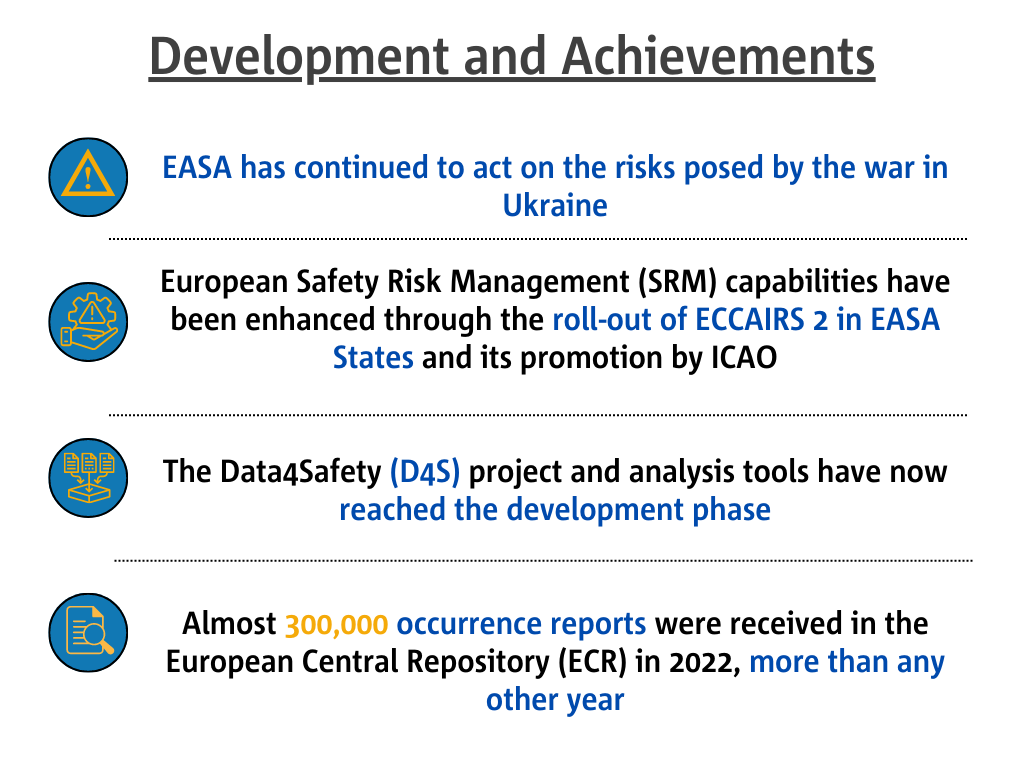
What’s new in the ASR this year:
Domain specific appendices have been introduced with more advanced safety data and analysis for our specialised readers:
- Where a domain safety risk portfolio exists, the domain specific appendix outlines the safety issues that have been identified. The appendices include safety issues, which are prioritised based on their aggregated risk contribution using ERCS.
- An airworthiness analysis is provided in the product-related domains. The term airworthiness includes aircraft design, aircraft production, and aircraft maintenance. The analysis shows the contribution of aircraft system loss and malfunction to the accidents and serious incidents, including the distribution of the main Air Transport Association (ATA) chapters. A slightly deeper analysis reveals the contribution of design, production, and maintenance to aircraft system loss and malfunction; i.e. highlighting the systemic root cause of a system or equipment failure.
Updated aircraft chapters:
- A section in Chapter 2 Aeroplanes was added to provide safety data on the commercial air transport passenger and cargo operations conducted by EASA Air Operator Certificate (AOC) holders with non-complex aeroplanes.
- Commercial air transport – the complex aeroplanes section covers the commercial air transport passenger and cargo operations carried out by EASA Air Operator Certificate (AOC) holders with complex aeroplanes with a maximum certificated take-off mass exceeding 5700 kg or equipped with (a) turbofan engine(s) or more than one turboprop engine. Examples include airline, air taxi, air ambulance
- The ATM/ANS domain concerns occurrences where the provision of services by the ATM/ANS was, directly or indirectly, a contributing factor in the occurrence or played a role in aggravating the occurrence encountered by the aircraft.
- The new Occurrence Categories section, presents a per domain analysis of the last 5 years of occurrences, using the ICAO Accident Incident Data Reporting (ADREP) taxonomy.
Commercial and NCC Aeroplanes
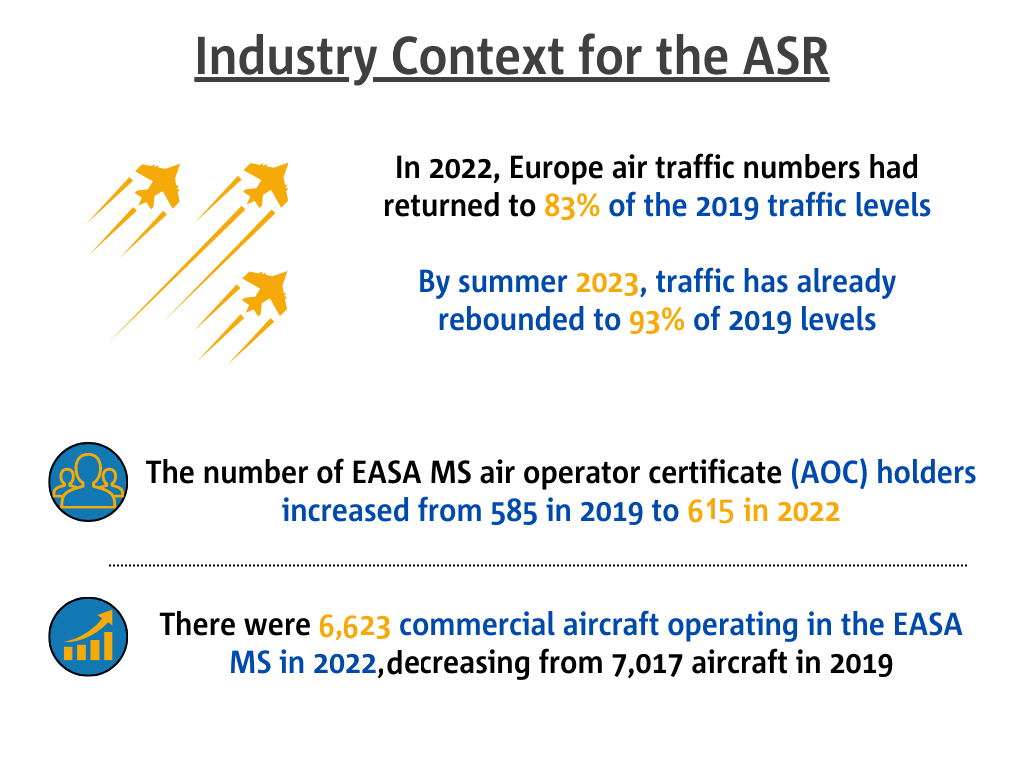
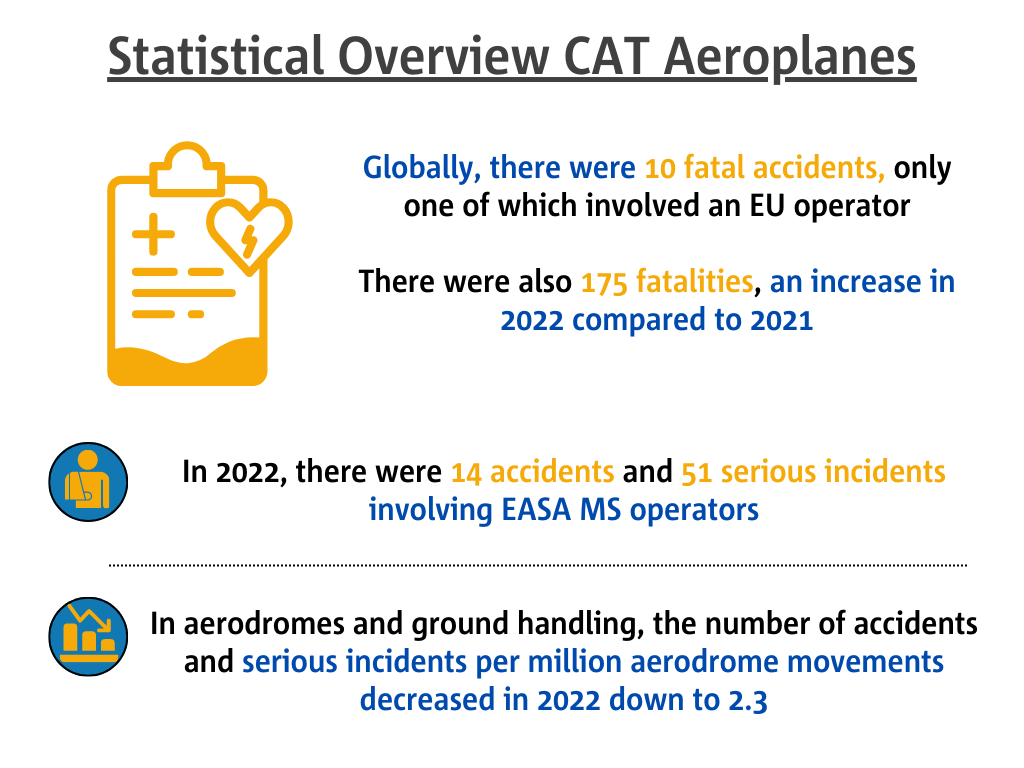
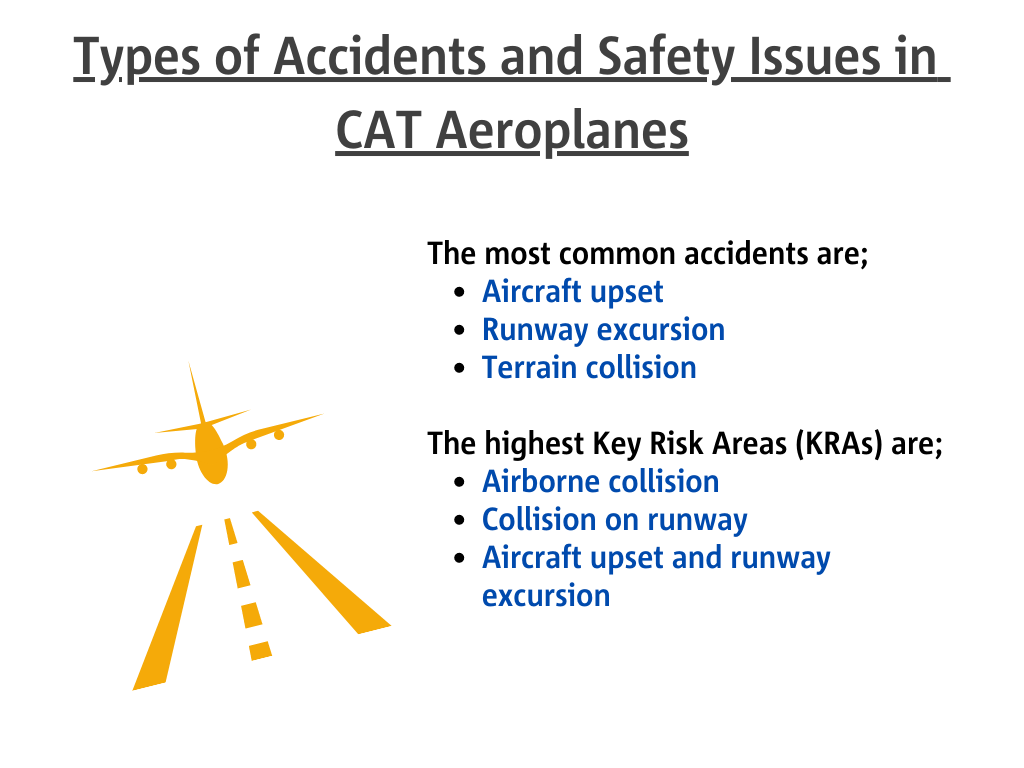
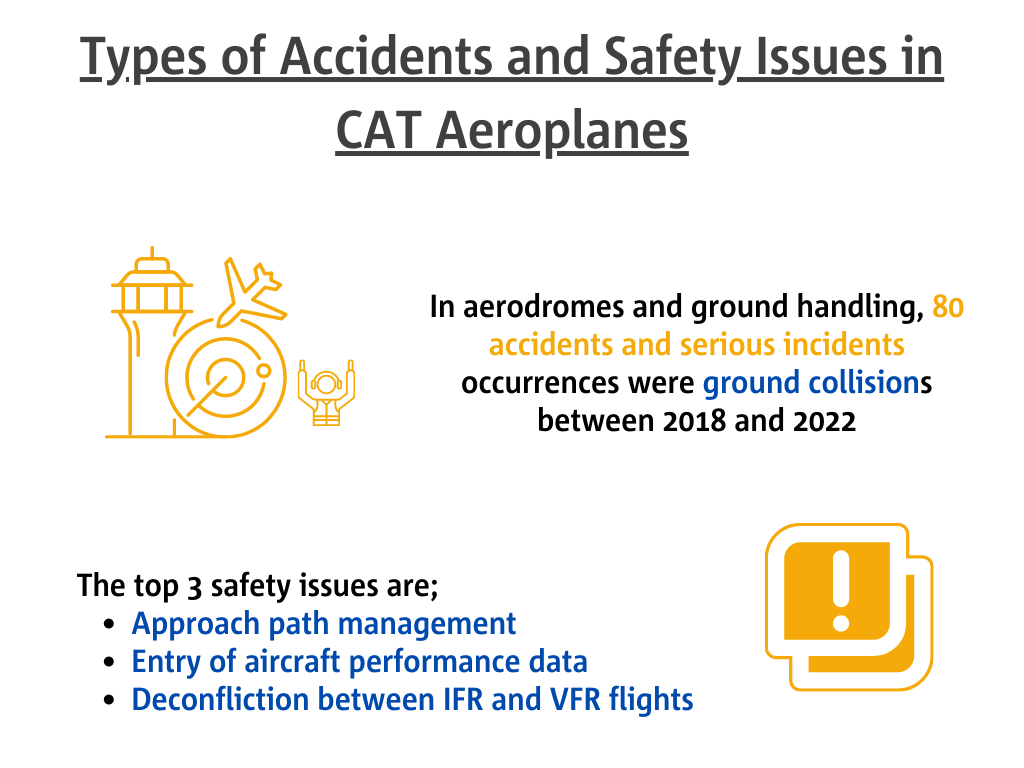
Please log in or sign up to comment.